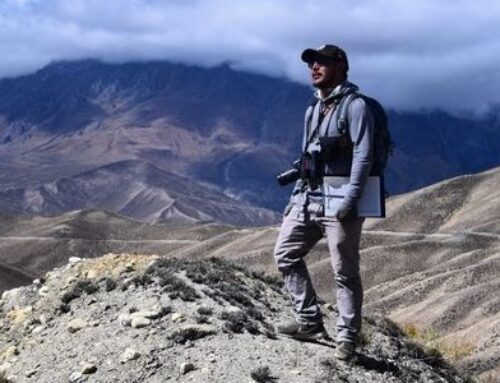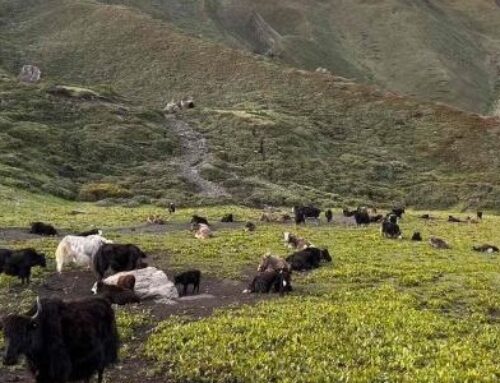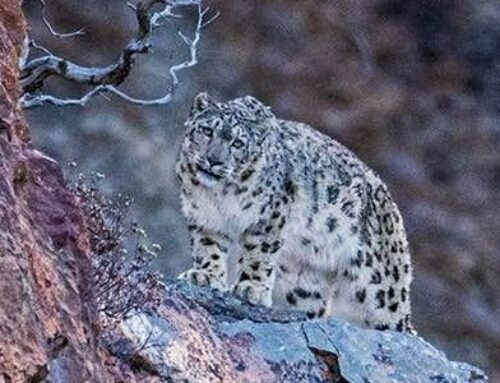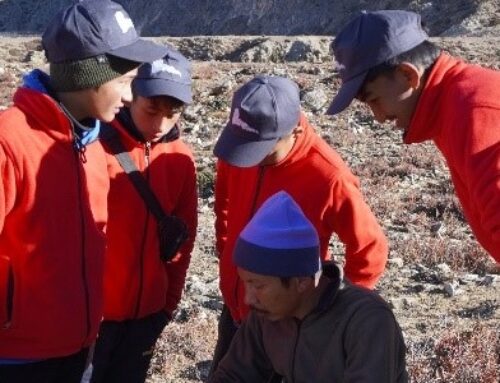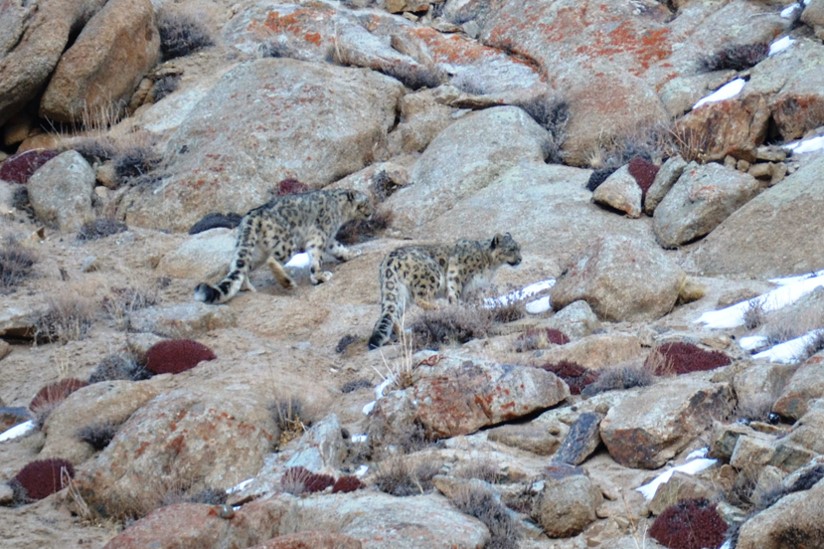
Photograph courtesy of KarmaQuest
Your chance to see a snow leopard on its own turf
by Wendy Lama
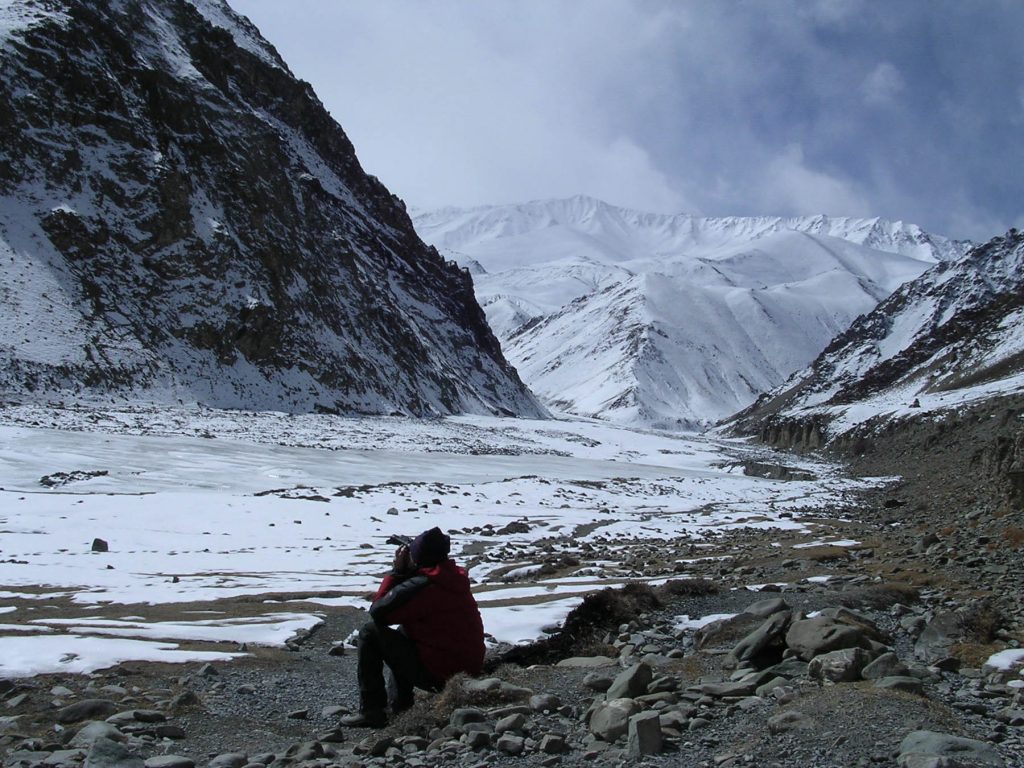
Scouting for snow leopard takes patience & good binoculars: B. Sharaf
Not long ago, your chances of seeing a snow leopard in the wild were next to none unless you were a yak herder, a trans-Himalayan trader, a wildlife photographer or snow leopard researcher, braving the frigid cold at high altitudes for months on end. Your only real chance of seeing these magnificent cats was in a zoo. Dr. Rodney Jackson, one of the world’s leading snow leopard experts, spent decades tracking snow leopards before he saw one in the remote mountains of Nepal, as he documents in a 1986 National Geographic article.
Because of Dr. Jackson’s research — and with the keen eyes of local snow leopard trackers who benefit from snow leopard ecotourism – you now have a pretty good chance of seeing these highly elusive cats on their own turf during winter months in Ladakh, India.
No, not on a webcam or a YouTube video but with your own eyes, enhanced by a high-powered spotting scope. And you needn’t be a marathoner or mountaineer; if you are in good health, are a strong hiker and don’t mind sleeping in a tent at 12,000 ft in sub-zero temperatures, you can join a KarmaQuest winter snow leopard trip as have scores of travelers who claim it as a lifetime high.
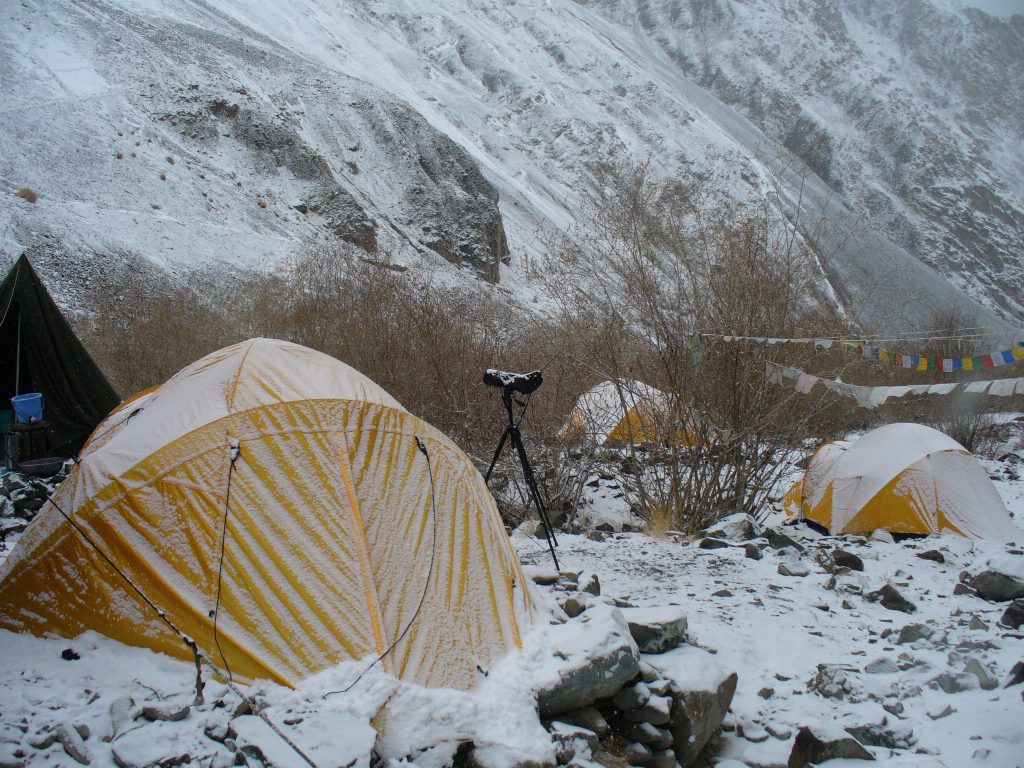
Sturdy tents are your home for 8 nights at base camp, with a spotting scope ready at hand: N. Aucoin
“The trip was fabulous. Spotting that leopard at the end of our trek was priceless! To be able to spend an hour in the presence of such a magnificent creature (on HIS terms) is something we’ll never forget.” (B. Sharaf)
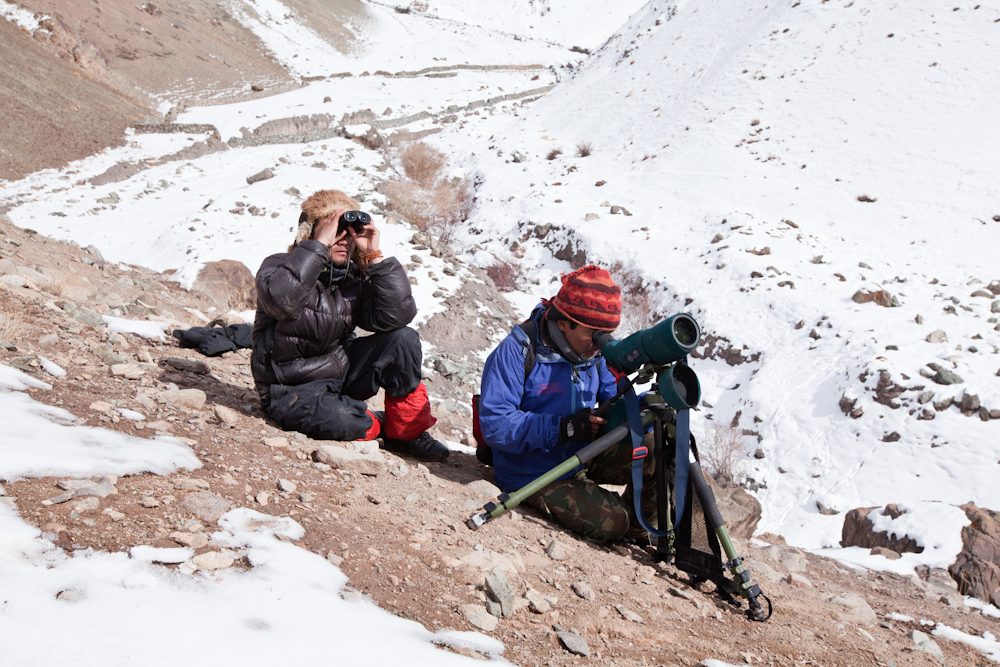
Photo: K. Garrod
Since 2005, KarmaQuest Ecotourism and Adventure Travel LLC in collaboration with Snow Leopard Conservancy (SLC) has operated snow leopard tracking trips to Ladakh. The award-winning “Wintertime Quest for the Snow Leopard in Ladakh” has the remarkable record of tallying up one or as many as four snow leopard sightings on every trip.

Scampering about snowy hillsides rewards one with ideal vantages for snow leopard spotting: A. Lathers
Here’s what it is like…
“We headed up Husing Valley and after an amazing and challenging hike we rested on top of a large section of the river that was frozen. (Our snow leopard expert and spotters) Jigmet, KC and Namgyal set up the scopes looking back down the valley for any sign of the beautiful Grey Ghost… They headed a little further up the mountain hoping for a sign (and then came) tearing down the mountain with barely enough breath to say, “snow leopard!” I did the best I could to move as fast as possible up the mountain while trying to breathe the limited oxygen at 4200 meters/13,700 feet… As I reached Jigmet, I sat down in the freezing snow to catch my breath…”
“With Jigmet’s hawk-eye he pointed her out to me. She was beautiful! Her blue sheep kill sat just below her as she watched us and kept the cheeky magpies away. So wild and free, I’m truly in her territory now. After some time, we tried moving closer, but she became a little wary of us and headed further up the mountain… After waiting patiently and being fed yet another amazing meal by the crew (I’m still amazed that they bring the food to us no matter where we are), the snow leopard cautiously headed back to its kill and watching us in the distance.
“The following day we headed back up to the Valley hoping to see her on her kill again. The walk seemed so much easier… As we turned the corner there she was… We spent the day with her and watched her move from her kill up the mountain then back down to her kill chasing the magpies away… She was like a little playful kitten at times… I must say just sitting there watching her and taking in the surroundings was just incredible.” (K. Martlew)
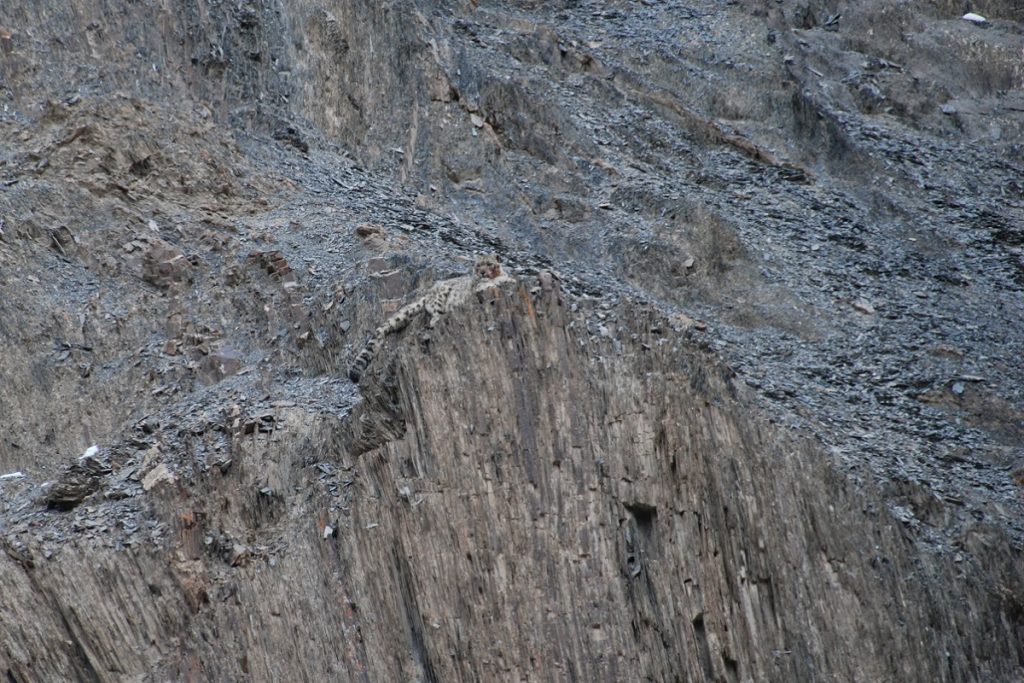
A snow leopard rests after a kill, “drunk on meat:’ SLC
What makes it possible to now see a snow leopard in the wild, unlike decades past when it was almost unheard of?
In the words of Darla Hillard, the Conservancy’s facilitator for the Land of Snow Leopard Network, “success depends upon years of research and documentation of snow leopard movements and behavior as well as having up to the minute information about snow leopard movement. Herders-turned snow leopard stewards now voluntarily head outside in the dead of winter to report snow leopard tracks, kills and activity to tour groups, knowing that their families and community members will benefit from such sightings.”
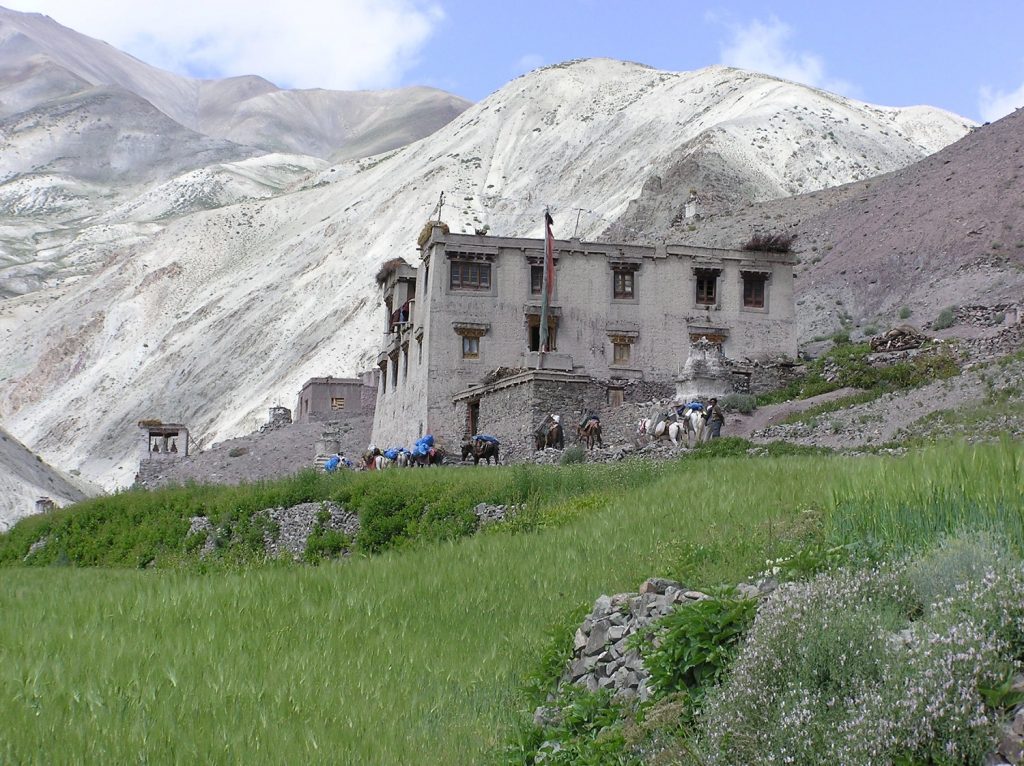
Tourism generates income for pack animal service providers and homestay operators in Rumbak: J. Yee
How do families benefit from snow leopard ecotourism?
Families of Rumbak village host trekkers in their traditional homes outfitted as homestays. They also work as guides and provide pack train services to trekking groups; and occasionally sell their hand-made crafts. The increase in household income has allowed families to send their children to better schools and to invest in improved livestock care (better enclosures and grazing management practices) as well as to use alternative fuels that help conserve the sparse natural vegetation.
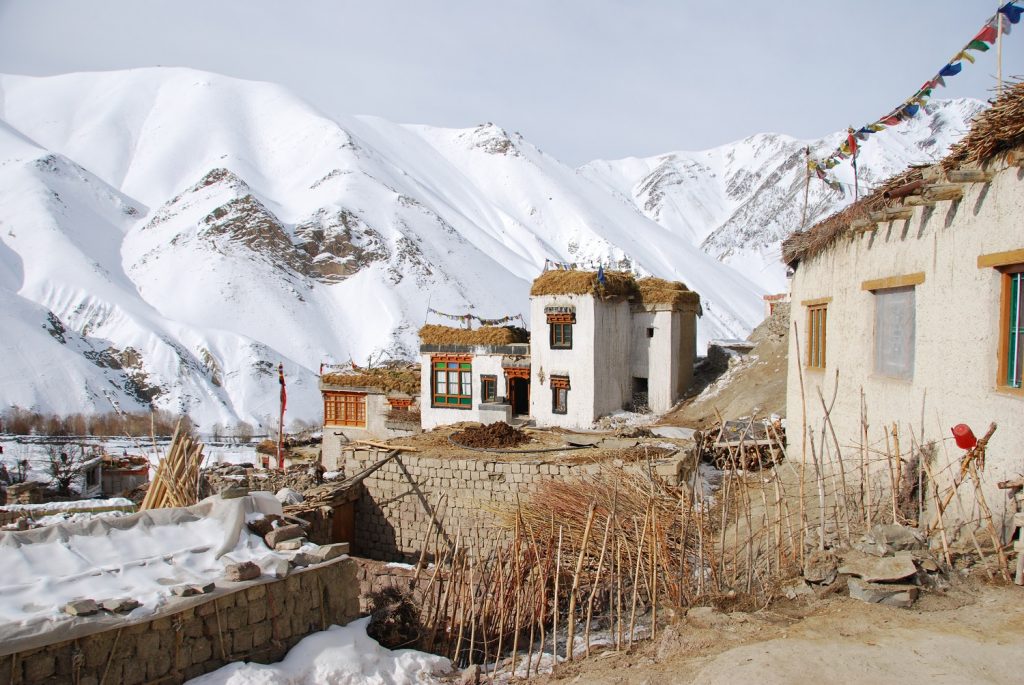
At approximately 13,000 ft, Rumbak village sees winter snowfall, good conditions for tracking snow leopard: SLC
In addition, each KarmaQuest snow leopard trip member generates a $500 donation to Snow Leopard Conservancy which is shared with SLC’s sister organization in Ladakh, SLC-IT, to support snow leopard research and conservation activities. Thus far, over $40,000 in donations have been made.
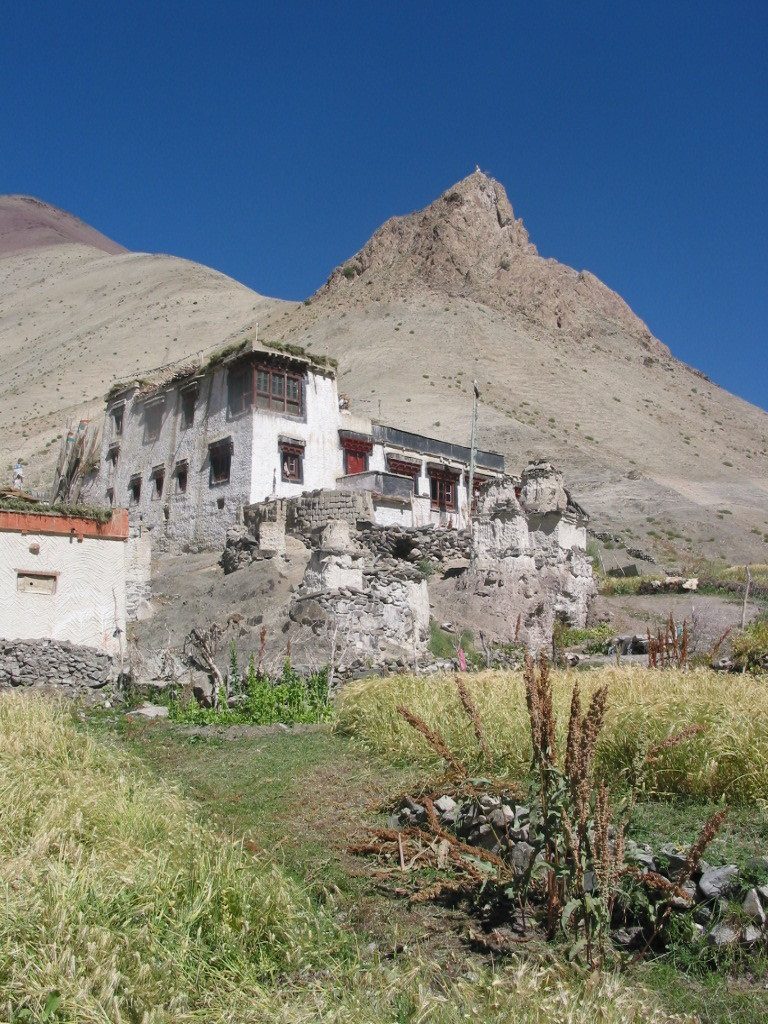
Rumbak Village: W. Lama
What is it like to camp and hike at 12-13,000+ feet?
During the first few days in Leh, the capital of Ladakh, you’ll take it easy, sightseeing to the centuries-old mud-walled palace towering over the town and gradually acclimatizing to the elevation. On day three, you’ll drive an hour or so by jeep to the trailhead and hike a couple of hours on a gradually ascending trail to base camp at 12,300 feet elevation, where the staff has set up camp. There, you’ll spend the next eight nights sleeping in a sturdy tent on heavy duty mattresses, with all your meals prepared and served in a heated dining tent by your Ladakhi staff. Toilet tents are also provided.
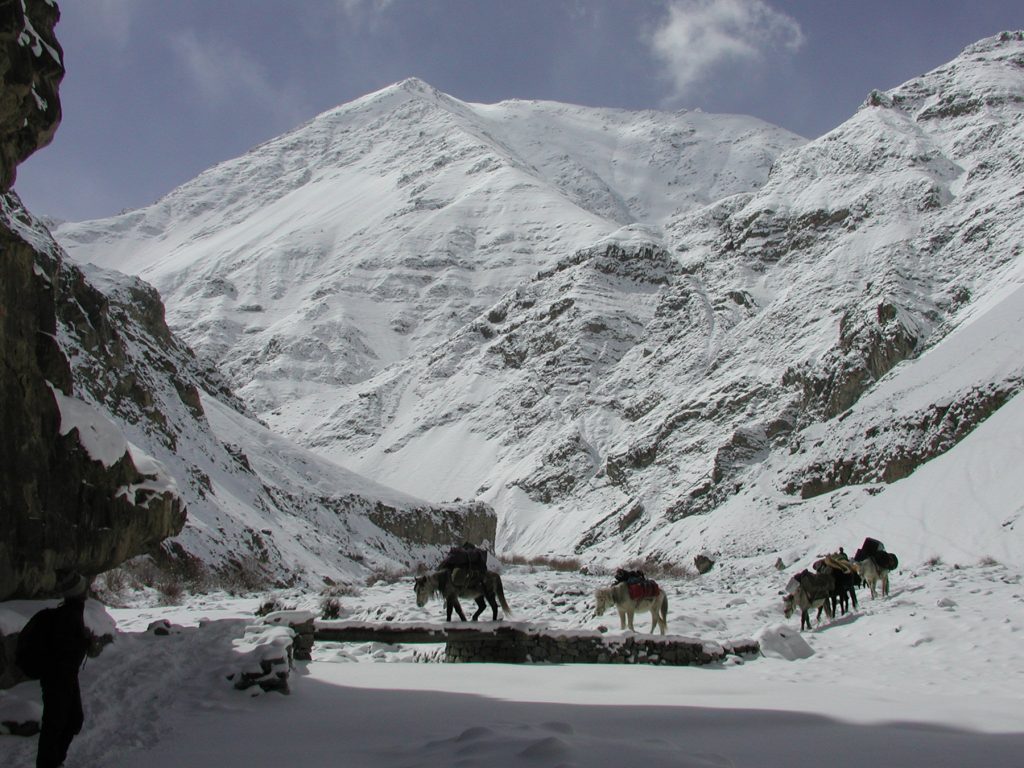
Pack animals carry guests’ gear to base camp: SLC
You’ll spend one night in Rumbak village in a homestay, treated to traditional food and warm hospitality. You’ll get to know their family despite language barriers and observe their way of living as high-altitude livestock herders as were their ancestors for generations. Besides the snow leopard sightings, the homestay experience is truly one of the trip highlights for guests.
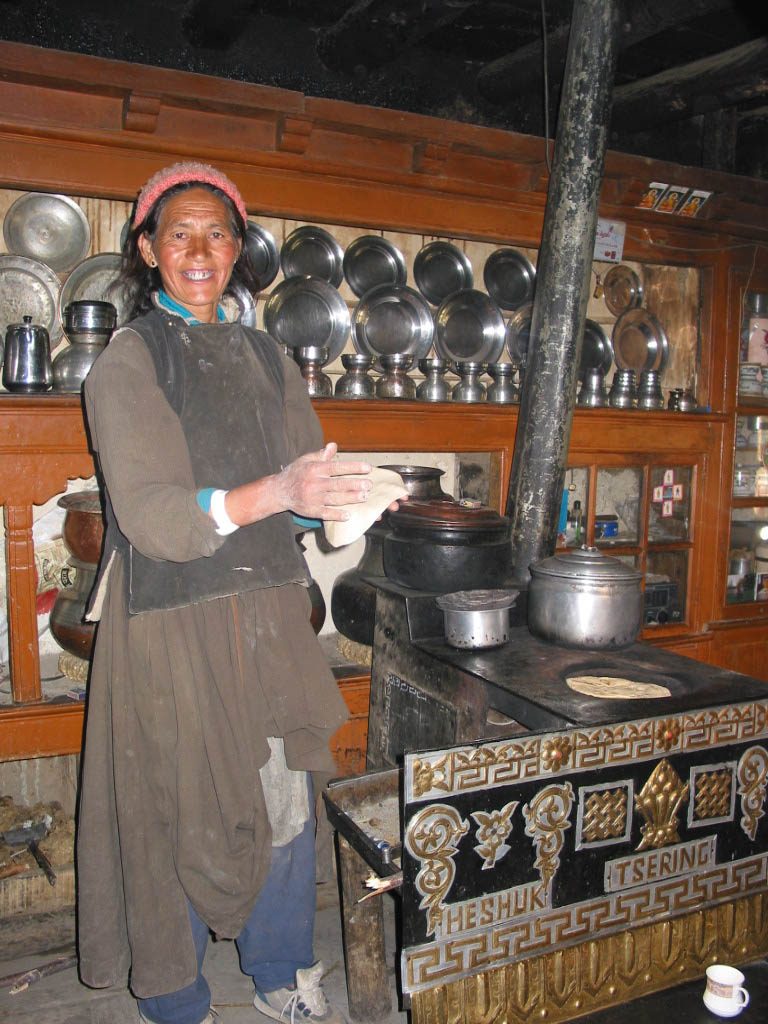
Homestay hostess prepares roti for guests on a traditional Ladakhi stove: W. Lama
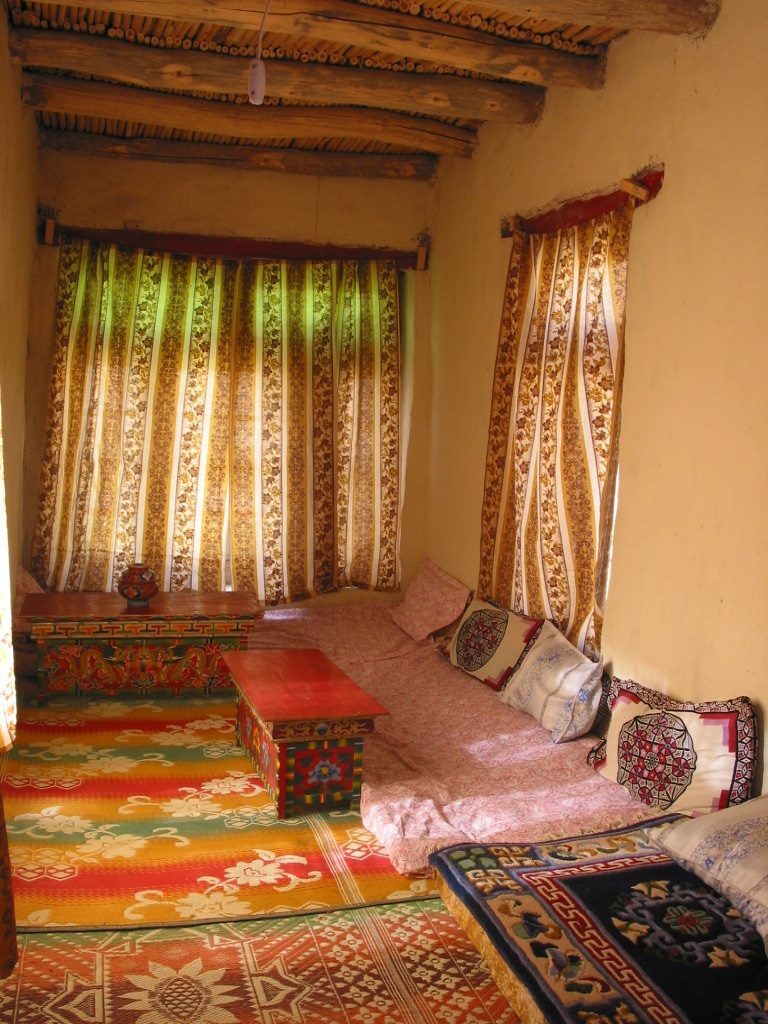
Homestay room: W. Lama
“We crouched on the mats around the stove… chatting and trying out a few newly-acquired Ladakhi phrases. We watched them assemble a fine meal of homemade pasta, cooked with some greens and peas. We had so much fun talking with them, showing photos, and looking at their family albums. We tried their home-made beer or chaang, and Dee tried spinning some sheep’s wool. With Tsering Dorje’s knowledge of English, we made some good headway in understanding a bit of their way of life. Around 9 pm, we headed off to our room, a delightful space on the top floor, with floor to ceiling windows on two walls, giving us an excellent view.” (B. and D. Keating)
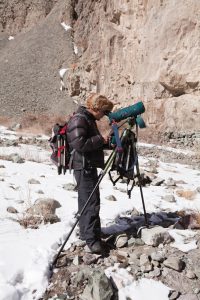
Ladakh, India: K. Garrod
Back at camp, during the daytime, you will follow the trackers’ leads and hike – often on steep trailless hillsides — to where a snow leopard has recently been sighted or where they are known to travel. Unlike a trek that you may have done in Nepal where you hike 5-6 hours to a new campsite each day, you’ll return to the same camp every day. It is also a far cry from an African safari where you are driven across the plains and observe wildlife from the seat of your vehicle. You may be sitting in the snow or on a rocky promontory for hours.
During your time in Ladakh, you’ll also attend a spectacular masked dance festival performed by Buddhist monks at a centuries-old monastery. These events are not staged for tourists but are an important part of Ladakhis’ culture and Buddhist rituals for the blessing of all who attend.
KarmaQuest snow leopard trips run every year during February-March, the best time to see the cats as they descend from the mountain tops in search of prey: mostly blue sheep and small animals, and an occasional domestic goat whose loss herders now tolerate without retribution due to the income they earn from ecotourism. A customized trip can also be arranged during autumn months (October through early December). Please check out the KarmaQuest website for more information about the trip and how to join.
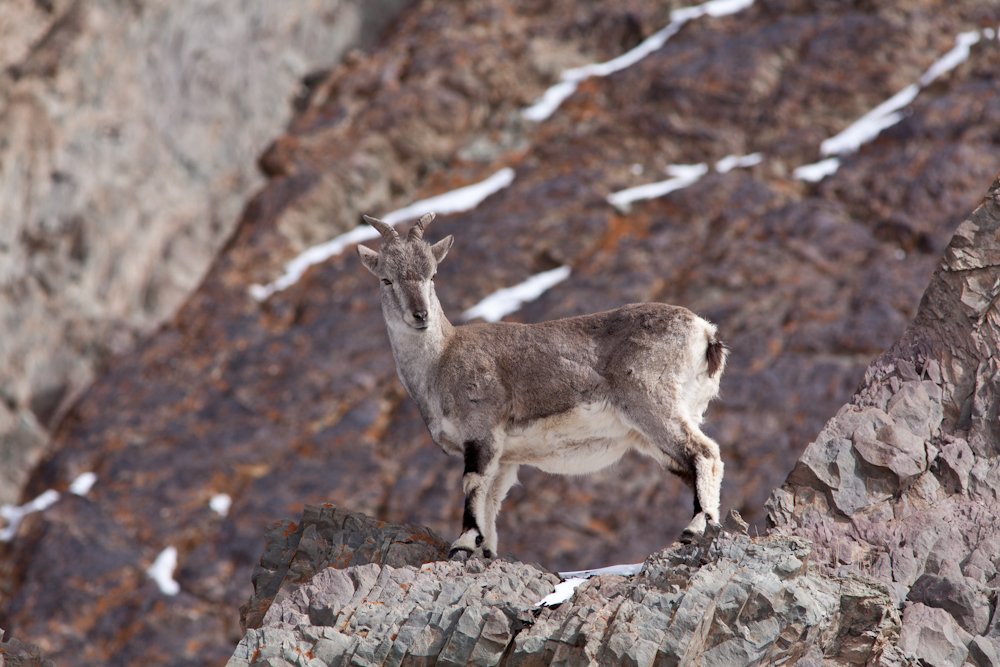
Himalayan Blue Sheep or Bharal stand alert on a rocky crag above Rumbak: K.Garrod


